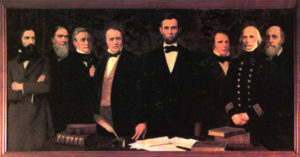 Lincoln sat at his desk in the Executive Mansion on March 3, 1863, and put his signature to the charter creating the National Academy of Sciences, one of many steps Lincoln took to institutionalize science and technology advancement in the federal government. The year 2023 marks the 160th anniversary of that event.
Lincoln sat at his desk in the Executive Mansion on March 3, 1863, and put his signature to the charter creating the National Academy of Sciences, one of many steps Lincoln took to institutionalize science and technology advancement in the federal government. The year 2023 marks the 160th anniversary of that event.
He had always leaned on Smithsonian Institution Secretary Joseph Henry for his science and technology advice, but it was to other scientists Lincoln listened this time. While Henry was involved in a variety of activities, other Lazzaroni were pushing for a much broader scientific body. The seeds of the National Academy of Sciences had been planted in 1851 when Alexander Bache called for a federal “institution of science . . . to guide public action in reference to scientific matters.” By 1858, Louis Agassiz had outlined a basic structure and organization of such an academy, but President Buchanan and the antebellum Congress refused to act.
Agassiz, however, had not given up on the idea. Sensing an opportunity with the more science-friendly Lincoln at the helm, Agassiz enlisted the support of Massachusetts Senator Henry Wilson to prepare a bill. Wilson had close ties with Lincoln and had worked with him on a law to emancipate the slaves in the District of Columbia, so he likely discussed the academy idea with the president. Indeed, a cryptic note from Lincoln during this time asked, “Will Senator Wilson please call and see me.” Another enigmatic note from Charles H. Davis suggests he may also have directly lobbied Lincoln midway between the bill’s introduction and passing.
After originally introducing the bill in committee on February 20, Wilson cleverly queried the chair just before session adjournment late on March 3 for the right “to take up a bill, which, I think, will consume no time, and to which I hope there will be no opposition. . . . It will take but a moment, I think, and I should like to have it passed.” With senators eager to head home, and because it required no funding appropriation, the short bill establishing the National Academy of Sciences (NAS) was hurriedly read, then passed on a voice vote. Immediately, it was sent over to the House to receive similar rubber-stamping, then rushed up to President Lincoln, who signed it that night.
The function of the NAS was stipulated in six lines of the brief chartering document. When called upon by the government, members were to “investigate, examine, experiment, and report upon any subject of science or art.” Appropriate expenses for conducting and reporting this work would be borne by the government, but neither the academy nor the individual scientists were to receive any form of compensation—the NAS would be a volunteer organization.
The NAS created a charter membership of fifty specifically named scientists, which not surprisingly included Joseph Henry as well as Louis Agassiz, mathematician Frederick Barnard, Naval Observatory Director James Gilliss, Admiral John Dahlgren, geologist James D. Dana, Admiral Charles H. Davis, botanist Asa Gray, mathematician Benjamin Peirce, chemist Benjamin Silliman, and its first president, Alexander Dallas Bache. Shortly after the initial meeting, Henry reported to his daughter Mary that the “affairs of the Academy have gone off very favorably and the establishment bids fair to do good service in the way of advancing science.” Henry was happy that Bache had been made president of the Academy, but his relief was brief; shortly after his letter, Bache suffered a cerebral hemorrhage that incapacitated him for several years. Henry functioned as de facto president during this time and officially took the title when Bache died in 1867, serving as both president of NAS and secretary of the Smithsonian until his own death in 1878.
Creation of the NAS was not without controversy, even seen as ill-conceived by many entrenched forces. The selection of the fifty charter members seemed haphazard. Some men named were startled by their inclusion, while other prominent scientists were befuddled by their exclusion. Joseph Henry claimed to have been left out of the selection process and told Princeton astronomer (and brother-in-law) Stephen Alexander he was “not well pleased” with the list of charter members, nor “the manner in which it was made.” Bache rebuffed Henry, claiming he had indeed had an opportunity to object to the members listed. More than a year later Henry quietly admitted he had not objected because he thought Congress would never pass the bill.
The fifty charter members did appear to reflect Bache’s preferences rather than a balanced representation of the various scientific fields, as Bache included his friends and excluded his enemies. Henry believed certain qualified scientists should have been on the initial list; Smithsonian curator Spencer Baird, for example, was arbitrarily excluded. Henry and Agassiz had a major falling out because of this omission, but with the support of Asa Gray and other influential scientists, Baird was eventually elected an academy member to replace one who had died.
To this day, the NAS remains an informal resource where unpaid advisers evaluate scientific questions. Greatly expanded by President Woodrow Wilson during World War I, there are now over 2,300 members plus almost five hundred foreign associates available to the White House, Congress, and government agencies for advice related to a variety of technical questions, including man-made climate change, agriculture, and science communication. The NAS now has a broad mission that includes “validating scientific excellence, enhancing the vitality of the scientific enterprise, guiding public policy with science, and communicating the nature, values, and judgments of science to government and the public.” Increasingly, the NAS has taken on coordination with other science academies around the globe. If it remains dormant, it is only because a particular administration chooses not to take advantage of the combined expertise of NAS scientists.
[Adapted from Lincoln: The Fire of Genius]
[Photo of Albert Herter painting from Smithsonian Institution Archives]

Lincoln: The Fire of Genius: How Abraham Lincoln’s Commitment to Science and Technology Helped Modernize America is available at booksellers nationwide.
Limited signed copies are available via this website. The book also listed on Goodreads, the database where I keep track of my reading. Click on the “Want to Read” button to put it on your reading list. Please leave a review on Goodreads and Amazon if you like the book.
You also follow my author page on Facebook.
David J. Kent is President of the Lincoln Group of DC and the author of Lincoln: The Fire of Genius: How Abraham Lincoln’s Commitment to Science and Technology Helped Modernize America and Lincoln: The Man Who Saved America.
His previous books include Tesla: The Wizard of Electricity and Edison: The Inventor of the Modern World and two specialty e-books: Nikola Tesla: Renewable Energy Ahead of Its Time and Abraham Lincoln and Nikola Tesla: Connected by Fate.
Like this:
Like Loading...

















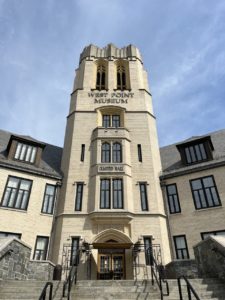 Abraham Lincoln made a secret trip to West Point in 1862. My recent trip to West Point was not so secret, and I also picked up and award in Lincoln’s legacy. I have the Lincoln Society of Peekskill to thank for both.
Abraham Lincoln made a secret trip to West Point in 1862. My recent trip to West Point was not so secret, and I also picked up and award in Lincoln’s legacy. I have the Lincoln Society of Peekskill to thank for both.

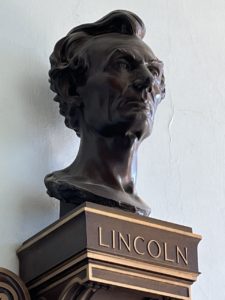 Abraham Lincoln famously had less than one year of formal schooling, but you can find him now at both Harvard and Yale.
Abraham Lincoln famously had less than one year of formal schooling, but you can find him now at both Harvard and Yale.



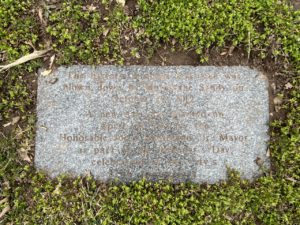 Several days before my visit to Harvard I was on the Yale campus. Lincoln had given a speech in 1860 in Union Hall. The hall no longer stands (the High School in a Community is now in its place) but there is a memory of Lincoln on the green at Yale. There, at least up until recently, stood a majestic Oak deemed the “Lincoln Memorial Oak” that had stood for ages. In late 2012 the stately old tree was toppled by Superstorm Sandy,
Several days before my visit to Harvard I was on the Yale campus. Lincoln had given a speech in 1860 in Union Hall. The hall no longer stands (the High School in a Community is now in its place) but there is a memory of Lincoln on the green at Yale. There, at least up until recently, stood a majestic Oak deemed the “Lincoln Memorial Oak” that had stood for ages. In late 2012 the stately old tree was toppled by Superstorm Sandy, 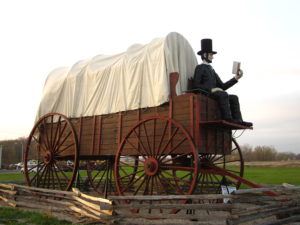 Abraham Lincoln made two trips to New England in his lifetime, and I will soon embark on a road trip of my own to follow in his footsteps. This isn’t my first such trip. Pre-COVID I made several road trips – long solo drives tracing Lincoln’s roots through Kentucky, Indiana, and Illinois, with side trips into Lincoln-related sites in Tennessee, Michigan, Wisconsin, and elsewhere. You can
Abraham Lincoln made two trips to New England in his lifetime, and I will soon embark on a road trip of my own to follow in his footsteps. This isn’t my first such trip. Pre-COVID I made several road trips – long solo drives tracing Lincoln’s roots through Kentucky, Indiana, and Illinois, with side trips into Lincoln-related sites in Tennessee, Michigan, Wisconsin, and elsewhere. You can 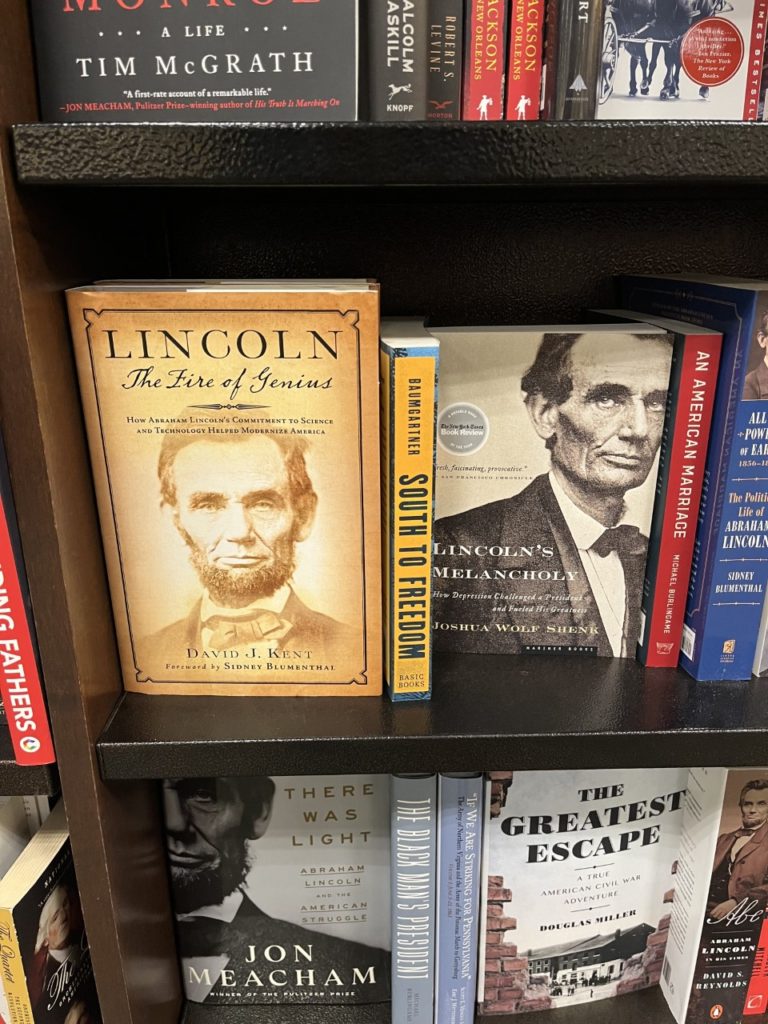
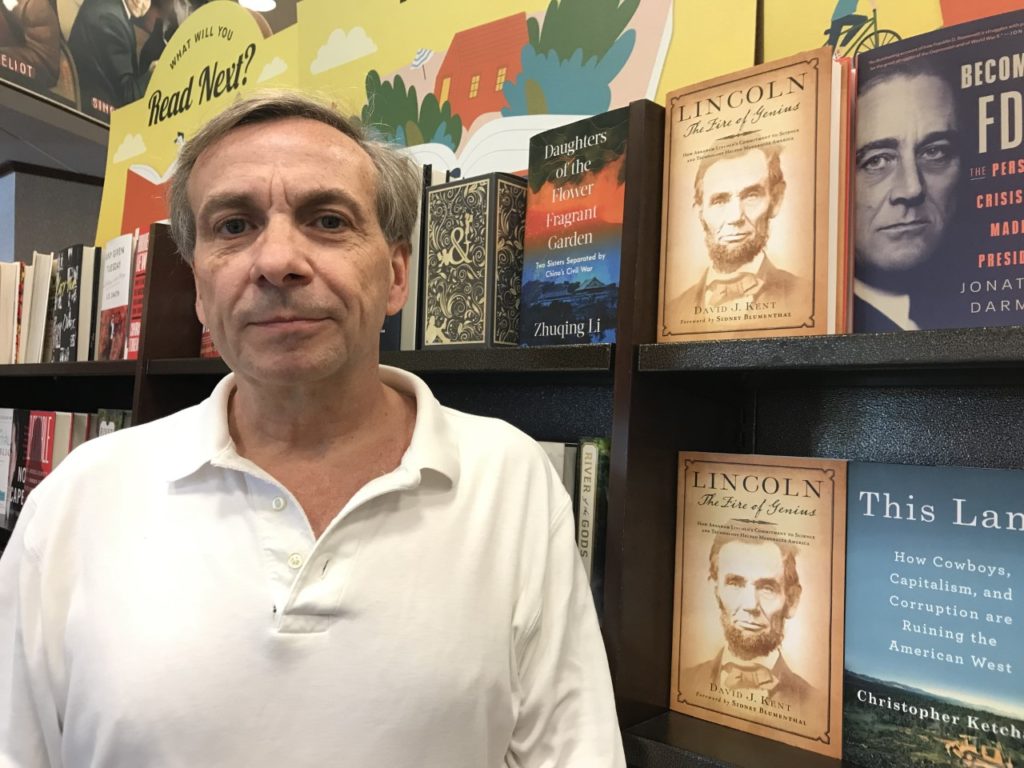
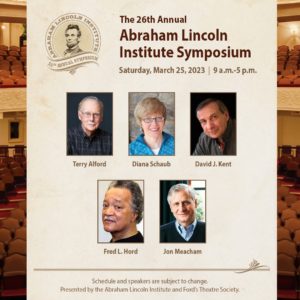 In less than two weeks I’ll be joining Jon Meacham and three other Lincoln scholars on the stage at Ford’s Theatre for the Abraham Lincoln Institute Symposium.
In less than two weeks I’ll be joining Jon Meacham and three other Lincoln scholars on the stage at Ford’s Theatre for the Abraham Lincoln Institute Symposium. Lincoln sat at his desk in the Executive Mansion on March 3, 1863, and put his signature to the charter creating the National Academy of Sciences, one of many steps Lincoln took to institutionalize science and technology advancement in the federal government. The year 2023 marks the 160th anniversary of that event.
Lincoln sat at his desk in the Executive Mansion on March 3, 1863, and put his signature to the charter creating the National Academy of Sciences, one of many steps Lincoln took to institutionalize science and technology advancement in the federal government. The year 2023 marks the 160th anniversary of that event.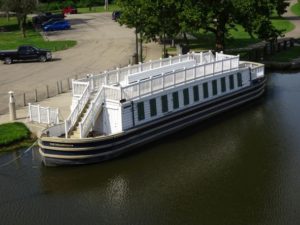 While February 27 is most famous for Abraham Lincoln’s 1860 Cooper Union address, it also is the date on which in 1836 Lincoln bought shares in the stock of the Beardstown and Sangamon Canal. Already the Whig leader in the Illinois state legislator at 27 years old, Lincoln promoted the American System of economic development, promoting internal improvement programs such as canals, roads, navigable rivers, and railroads. The Sangamon River passed by Lincoln’s home in New Salem and had already been a major factor in several incidents in Lincoln’s life as a flatboatman and steamship pilot, so he had made several attempts to improve the navigability of the narrow, curvy river.
While February 27 is most famous for Abraham Lincoln’s 1860 Cooper Union address, it also is the date on which in 1836 Lincoln bought shares in the stock of the Beardstown and Sangamon Canal. Already the Whig leader in the Illinois state legislator at 27 years old, Lincoln promoted the American System of economic development, promoting internal improvement programs such as canals, roads, navigable rivers, and railroads. The Sangamon River passed by Lincoln’s home in New Salem and had already been a major factor in several incidents in Lincoln’s life as a flatboatman and steamship pilot, so he had made several attempts to improve the navigability of the narrow, curvy river.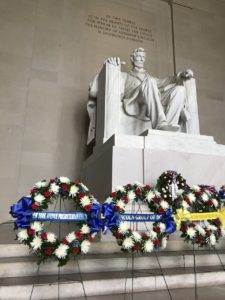 Finally! The long-delayed renovations to the Lincoln Memorial are about to start. My colleague in the Lincoln Group of DC, Ed Epstein, reported on the official U.S. National Park Service announcement this morning. Writing on the
Finally! The long-delayed renovations to the Lincoln Memorial are about to start. My colleague in the Lincoln Group of DC, Ed Epstein, reported on the official U.S. National Park Service announcement this morning. Writing on the 






